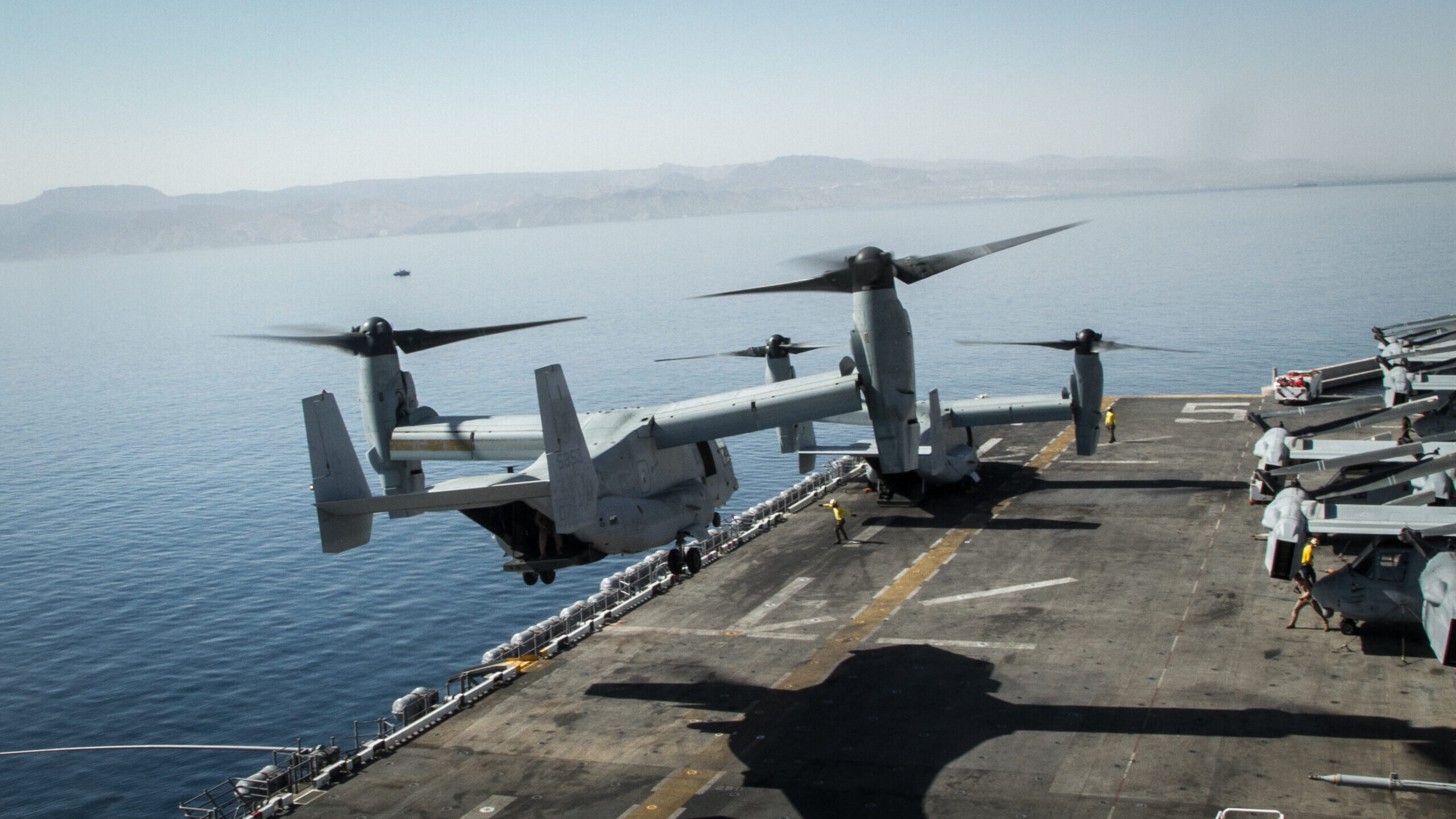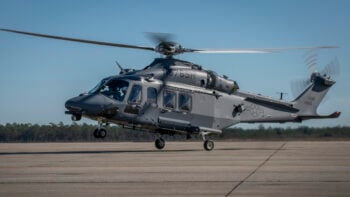
A U.S. Marine V-22 Osprey ascends the USS Bataan in Aqaba, Jordan, to begin a demo flight in support of Eager Lion 2017. (U.S. Army photo by Sgt. Mickey A. Miller)
WASHINGTON — The US military today grounded its tilt-rotor Osprey V-22 fleet, a week after the fatal crash of an Air Force Special Operations Command (AFSOC) CV-22 off Japan killed eight crewmembers.
In a statement late Wednesday, the commander of AFSOC said he had directed an “operational standdown” for AFSOC’s CV-22s “to mitigate risk” as the investigation into the Nov. 29 incident continues. AFSOC said “preliminary” information “indicates a potential materiel failure caused the mishap, but the underlying cause of the failure is unknown at this time.
“The standdown will provide time and space for a thorough investigation to determine causal factors and recommendations to ensure the Air Force CV-22 fleet returns to flight operations,” the AFSOC statement said.
Naval Air Systems Command said in a separate statement just minutes later that “out of an abundance of caution,” it too was grounding all variants of the V-22, which would include the one used by the Marine Corps.
“While the mishap remains under investigation, we are implementing additional risk mitigation controls to ensure the safety of our servicemembers,” NAVAIR said.
The NAVAIR statement noted that the V-22 Joint Program Office was in contact with other stakeholders, including allies that fly the Osprey. Japan announced a day after the fatal crash that it was grounding its V-22 fleet and at the time requested that the US military stop flying V-22s in Japanese territory. (AFSOC 21st Special Operations Squadron paused flying the aircraft after the crash, but a spokesperson told Breaking Defense Tuesday that was to give servicemembers time to grieve and was not associated with safety concerns.)
The Nov. 29 crash is the second fatal incident for the Osprey this year. In August, a Marine Corps MV-22B crashed in Australia, killing three Marines and injuring several others. Last year, two Marine Corps Ospreys separately crashed in March and June, where all four and five crew members, respectively, were killed.
The March crash was attributed to pilot error, but investigators of the June crash blamed a malfunction in the aircraft’s gearbox known as a “hard clutch engagement” (HCE) that an accident report described as “unpreventable.” The HCE issue sparked a standdown for the Air Force’s variant of the aircraft and prompted a retrofit effort, though the Marines at the time decided not to ground their fleet.
Air Force declares ‘critical’ Nunn-McCurdy cost breach for MH-139A Grey Wolf helo
The cost breach is driven by the service’s plan to cut the buy of the helicopter in half, not by any cost overrun in the program itself.


























